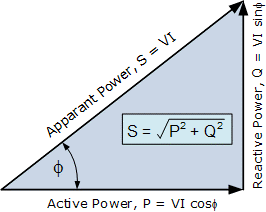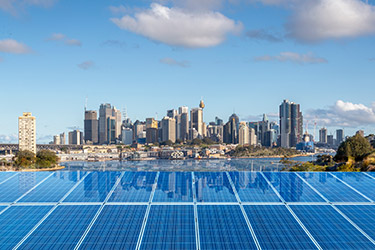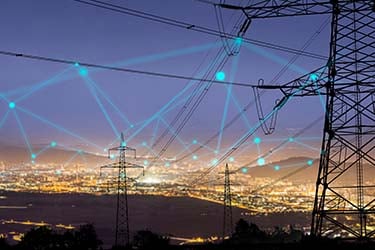13 FAQs on industrial power factor correction - answered
Jason Harvey, Published: November 15, 2018 - Updated: October 20, 2023 (7 min read)
If you’ve been asked to improve your businesses’ energy efficiency in a bid to reduce electricity bills, you’ll likely have considered power factor correction.
Power factor correction, used in the right situation, can have dramatic results on energy consumption. But its impact is largely dependent on your current power factor and operational variables. You’ll need to do some basic research and calculations in order to determine if and what sort of power factor correction is suitable.
We’ve collated our most frequently asked questions on power factor to help you understand if power factor correction is suited to your context, and how to practically implement it. Armed with this knowledge, you can make a confident decision for the business.
Frequently asked questions on power factor correction:
1. What is power factor?
Power Factor is the ratio of active power (kW) to apparent power (kVA). That is, the amount of power that is flowing to the system/appliance (kVA) vs the amount it actually uses to perform its function (kW). The waste energy component of apparent power is known as reactive power (kVAR).
2. What is power factor correction?
Power factor correction is the term for any equipment that compensates for reactive power and improves the power factor ratio.
3. Why should I improve my power factor?
As clients of the electricity market, commercial and industrial installations (or facilities) are charged for all the energy consumed, but not all this energy is doing useful work. By correcting power factor, the waste reactive power component of consumption is significantly reduced, saving the business money.
Note: The level of savings depends on the amount of reactive power in the electrical installation prior to installation of corrective equipment.
4. What are the causes of poor power factor?
Inductive loads such as electric motors, ballast lighting and transformers contribute to poor (low) power factor. In addition, inductive loads that are not used at, or near, their design capacity contribute significantly to a low power factor.
Low power factor is generally caused by significant reactive power in a system.
5. What is reactive power?
Reactive power is considered as ‘wasted power’ as it does not perform useful work in a system. The higher the portion of reactive power, the lower the power factor.
Here’s a breakdown of power types:
Active or True Power (kW) = power that is performing useful work
Reactive Power (kVAR) = power that is not performing useful work
Apparent Power (kVA) = The vector sum of Active and Reactive Power. This is what we pay for
Power factor = the cosine of the angle between Active and Apparent power vectors

Note: if we can reduce the reactive power component and therefore phase angle through compensation (power factor correction equipment) the apparent power vector reduces in length, resulting in lower electricity consumption and energy charges.
Read: Technologies that improve industrial energy efficiency Part 1: power quality and loads
6. How do I find out my power factor now?
Information on your consumption in Kilovolt Ampere Hours (KVAh) and Kilowatt Hours (KWh) is normally available in commercial and industrial installation energy bills or by requesting it from your electricity retailer. Your retailer should be capable of providing enough information to estimate potential savings in consumption.
For accuracy, and in order to evaluate harmonics, measurement over a period of time is recommended. You need to see all cycles of an installation – a week is normally enough, or if the business is seasonal you will need to compare these time periods.
Note: interpreting your consumption history to calculate power factor can be complex and requires engineering and mathematical skillsets. There is no one method, as each retailer provides this information in different formats.
Did you know? Power factor isn’t static – it fluctuates second to second and can be influenced by changes in processes such as motor loading.
7. What is a good score and what is a bad score?
A power factor close to unity (1) is a good power factor with little wasted energy whereas a power factor close to 0 represents a system where most of the energy is wasted.
Generally, a power factor of 0.8 or above is considered a good power factor. Lower than 0.8 and it should be corrected to save on consumption and comply with the requirements of the electricity network operator.
8. How do I improve power factor?
There are a multitude of methods to improve power factor. Some include:
- Upgrading or replacing inductive loads that do not operate close to their design capacity
- Local power factor correction at the load
- Centralised capacitive correction
- Static Var Generators (active power factor correction of lagging power factor)
- Active Power Filters (phase balancing, harmonic correction and active correction of leading and lagging power factor)
- The use of Variable Speed Drives (VSD) to control electric motors
9. How do I monitor the improvement?
The real-time consumption can be seen first-hand by measuring the fundamental current of a load with corrective equipment active and corrective equipment inactive. In time, this will be reflected in your power bill as a reduction in consumption, specifically a reduction in the apparent power consumption (kVA).
10. How much will it cost to correct my power factor?
The cost of correcting power factor depends on the amount of reactive power in your system. The greater the component of reactive power, the more equipment required to perform compensation.
It’s important to remember that every installation will need an engineered solution.
11. How long till return on investment?
The cost recovery on the capital expense of installing correction equipment will be dependent on the demand of your installation and the operating power factor. The lower the power factor is, the more expensive it will be to correct.
However, the lower power factor the higher the potential savings and therefore return on investment will be seen in a shorter timeframe.
12. How much can power factor correction save electricity consumption?
As an example, a client’s water treatment plant sought to improve its power factor with an Active Power Filter (APF). They had a very low power factor of .61, so had huge opportunities to save! Switching on the APF resulted in an instantaneous, ongoing 35-40% drop in consumption.
13. What should I watch out for when considering power factor correction?
There are a few things you should consider before launching into power factor correction:
- Adding new active technologies to an installation with existing capacitive correction requires careful consideration. Most manufacturers of active technology recommend removal of old technologies prior to installation.
- Power factor correction will only reduce consumption if there is a significant proportion of reactive power in the system.
- Electricity network providers have rules around minimum power factor. These must be considered in the design or modification of an installation.
Conclusion
Commercial and industrial sites that have many inductive loads installed should consider power factor correction alongside other methods of reducing consumption such as modifying loads, business process and employee behaviour.
As a first step, the most significant change we can all make to save energy and improve sustainability is to “switch it off” when not in use, or close that cool-room!
Still exploring your energy needs and options? Our free guide to managing industrial energy costs explores the energy market and current technologies that are giving heavy energy users saving opportunities. The guide covers: What energy challenges are big businesses facing?, Energy Management & Measurement, Making financial savings through improved energy efficiency, Distributed Energy Resources and Industry 4.0 Enhancements.
Download your free copy today: The graphical guide to managing industrial energy costs [with renewables and Industry 4.0]








